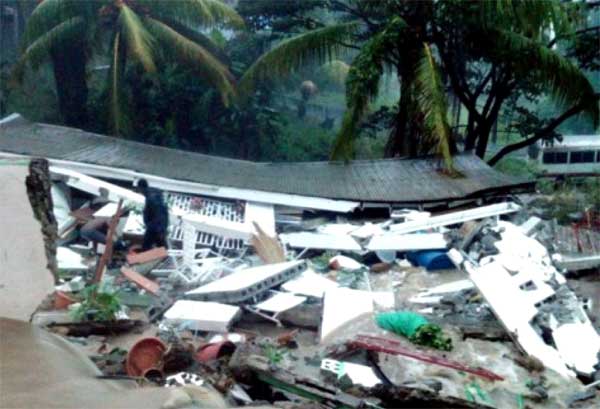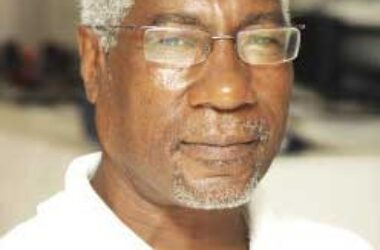
THE tragedy caused by Tropical Storm Ericka in Dominica caught many in Saint Lucia by surprise, as the forecast was showing that the storm would not have been a direct hit to that country. Viewing some of the footage of the devastation was indeed painful and one can only extend sympathy to those who have lost their loved ones in this tragedy. However, there are lessons for every Caribbean country to draw from this event.
Over the last 25 years, I have witnessed firsthand, the devastation caused by these weather events. From seeing twenty foot waves in the Castries harbour, to the landslide and floods of Tropical Storm Debby, the devastation of Hurricane Tomas, the Christmas trough, all these events have left pain and suffering to Saint Lucians. We are situated in a hurricane belt and we have to deal as a nation with these weather systems.
The combined cost to Saint Lucia’s economy by these weather systems over the last 25 years is more than twice our national debt. This statistic should thus be factored in any analysis of Debt to GDP ratio. It is time that the governments of the OECS states begin to deliberately segregate their loan portfolio to account for these natural disasters. The prudent fiscal management of a nation should not be muddled by the cost of repairing damage caused by a natural disaster. The proposal is thus to present our national debt in a disaggregated format. The lobby efforts and the diplomatic capital should thus be focused on debt relief of the component of our loan portfolio that relates to natural disasters.
Saint Lucia has developed some capacity in dealing with natural disasters. The Ministry of Infrastructure has performed with excellence over the last 25 years in restoring the infrastructure in a short space of time. However, the institutional capacity of that Ministry has diminished over the last five years with the retirement of many of the senior officers who were within the Ministry as far back as Tropical Storm Debby. One can only hope there was that transfer to the newer members of the staff.
One of the significant lessons coming out of Dominica is the need to create both resistant and resilient critical infrastructure. The most important response to a natural disaster is to be able to kick-start the economy in the shortest period. You have to get the airport, port, central business district, telecommunications, electricity and water systems operational in the shortest possible timeframe. The key is the quick return to mobility and economic activity.
The approach is thus to determine what constitutes the critical infrastructure to ensure that the country’s economic activity can continue. In Dominica, if you have an airport close to a river, then you need to have flood walls to ensure that any overtopping of the river does not affect the operations of your airport. The road from the airport to the capital is also a critical infrastructure and thus this road must be functional after a natural disaster. The bridges must be so designed to achieve resilience or resistance. Once you have determined your critical infrastructure, the next step is to consider the design parameters for the structures.
A policy decision has to be taken as to whether it should be a resistance design or a resilience design. The resistance design is one in which the structure is operational at all times during and after the event. An airport has to be a resistance based critical infrastructure. The resilience design is based on the structure being functional after the event, but may not be functional during the event. For example, a bridge may be designed to overtop in a 1 in 100 year event, and thus be impassable for a three hour period, but will be standing after the event. There is a difference in cost in the design.
We have lost the use of Hewanorra International Airport after every major weather event in the last 25 years. Certainly, our international airport has to be considered as a critical infrastructure that possesses a resistance design. The airport must remain open during and after the event. It therefore means that river training of the Vieux Fort River has to be looked at as a significant activity. The government of Saint Lucia did do some work on the Vieux Fort River after Tropical Storm Debby, however the breaches in both Hurricane Tomas and the Christmas trough have demonstrated the paucity of the design. One would strongly suggest that the present PPP project being conceived by SLASPA should also include the required works on the Vieux Fort River in its determination of the scope of works in the tendering process.
The West Coast, East Coast, Gros Islet Highway and the South Coast Road must be designed for resilience. It is acceptable that there is a delay of a couple hours after the event, and this is based on a cost factor as the difference in a resistance design and a resilience design can be substantial.
The people of Dominica need our prayers and material support. I would also suggest that the OECS Secretariat consider the establishment of a Technical Response Team, which will be drawn from the public and private sectors of various member states, and quickly activated in the event of a disaster. This Response Team will move into any Member State and provide the technical support required to get the country’s economic activity moving in the shortest possible timeframe.














